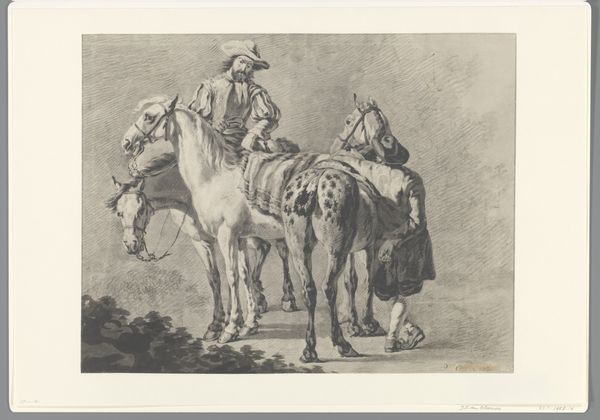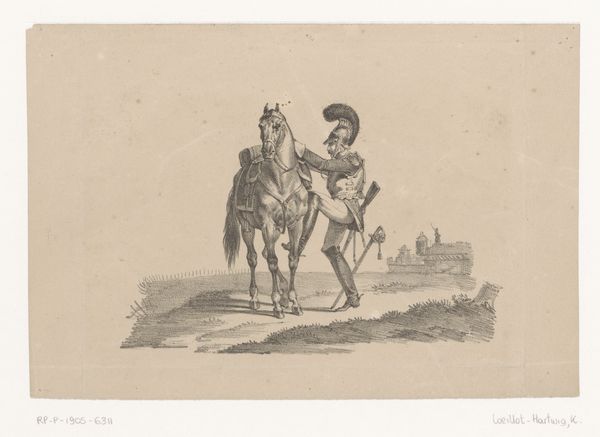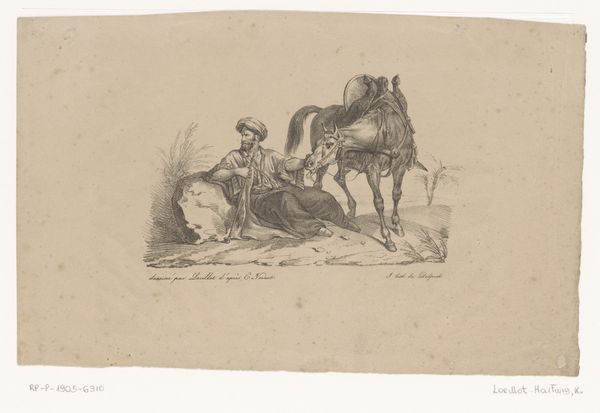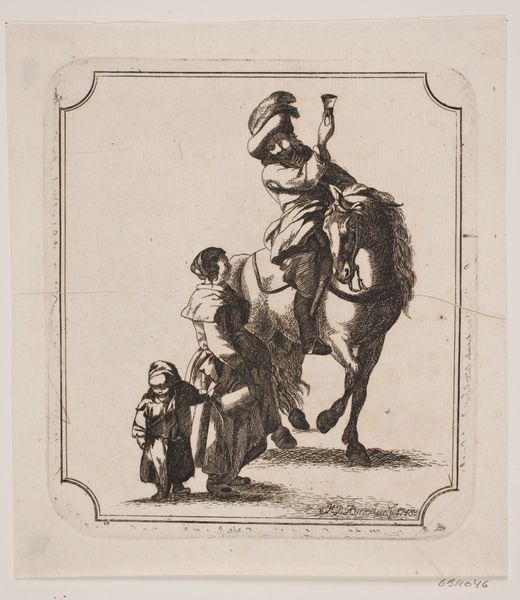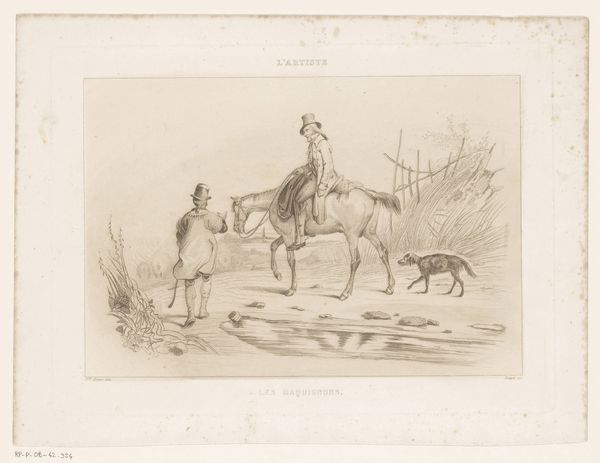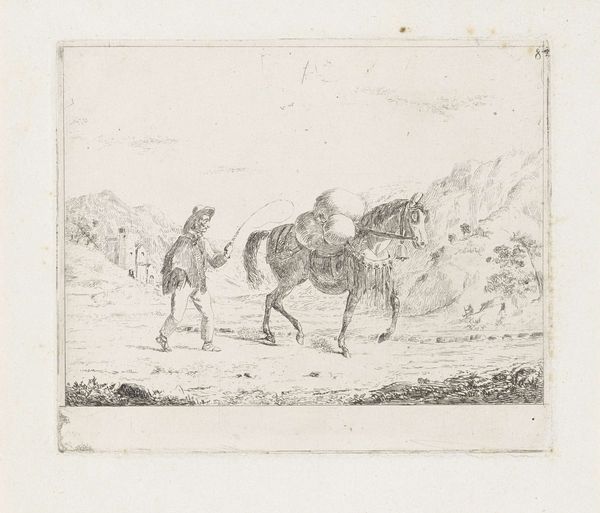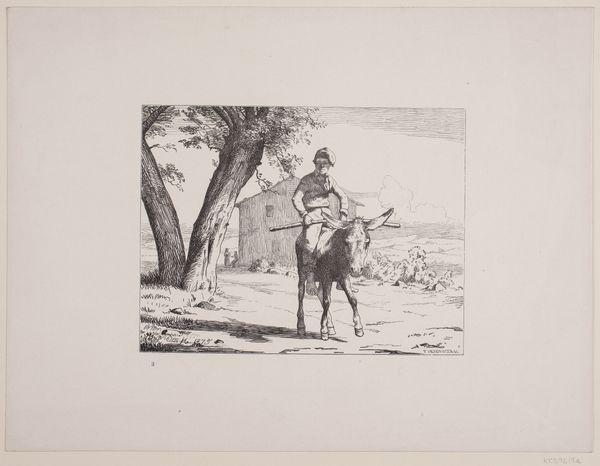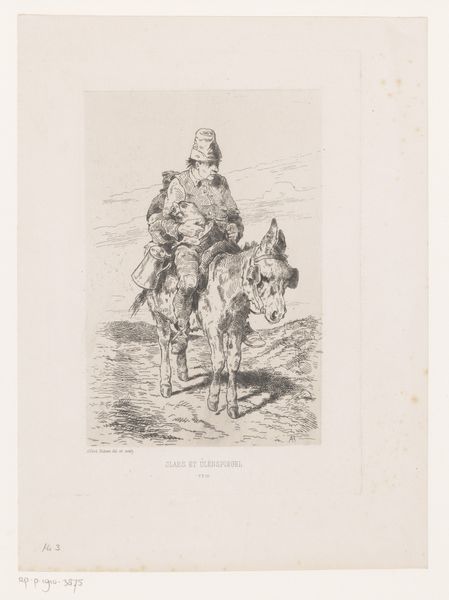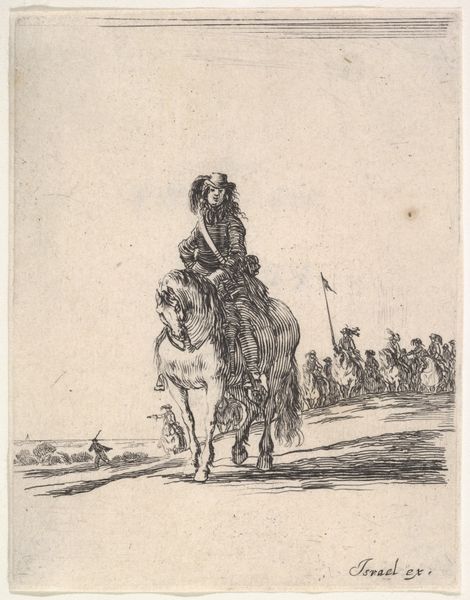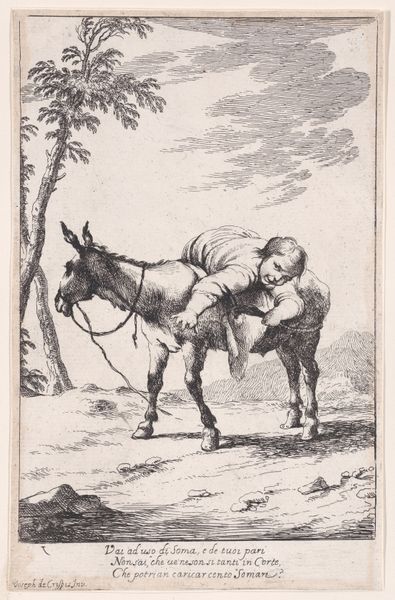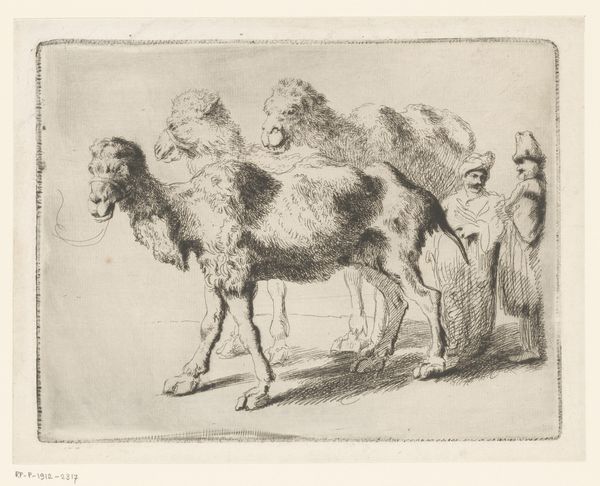
drawing, pencil
#
portrait
#
drawing
#
landscape
#
figuration
#
romanticism
#
pencil
#
horse
#
genre-painting
Dimensions: height 189 mm, width 275 mm
Copyright: Rijks Museum: Open Domain
Editor: This drawing by Karl Loeillot-Hartwig, "Paard en staande man in Ottomaanse kledij," dates back to the early to mid-19th century and is rendered in pencil. I find the composition quite striking; the detailed rendering of the horse contrasts with the more suggestive landscape background. What aspects of this work stand out to you? Curator: What immediately captures my attention is the work’s representation of Ottoman identity through dress and accoutrements. This piece becomes a window into the complex relationship between Europe and the Ottoman Empire during the Romantic period, saturated as it was in orientalism. How does the artist's portrayal contribute to the ongoing narrative about the “Orient” at that time? Editor: I hadn’t considered that! So the depiction, rather than simply being observational, could be seen as contributing to a power dynamic, where the "Orient" is something being observed and interpreted by the European gaze? Curator: Precisely. Consider the man's clothing, the horse’s elaborate harness – these details, rendered with care, speak to a fascination with otherness. It makes you wonder, doesn’t it, how the artist might be subtly reinforcing, or even challenging, the dominant colonial viewpoints. What does that finely detailed saddle covering, in contrast with the quickly rendered cityscape, suggest to you? Editor: It makes the horse and its handler the focal point, definitely exoticized. I’m seeing how the landscape almost fades, allowing the culture it’s meant to evoke to be consumed as an aesthetic object. I didn't approach it this way at first! Curator: Engaging with the historical and social context of such a work can illuminate the layers of meaning woven into its creation, shifting it from a simple genre scene into a commentary on power, identity, and cultural exchange. I find these insights extremely rewarding. Editor: Me too! It makes art history feel so much more relevant to understanding social narratives.
Comments
No comments
Be the first to comment and join the conversation on the ultimate creative platform.
